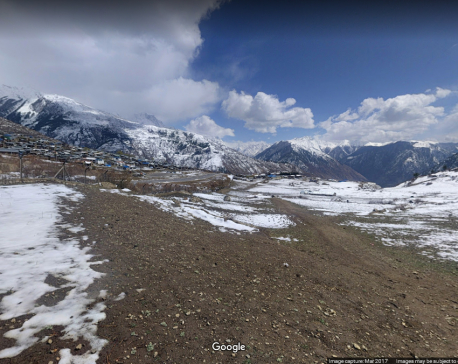
OR
Food balance lowest in seven years
Published On: June 24, 2016 02:20 AM NPT By: Rudra Pangeni | @rudrapang

KATHMANDU, June 24: Nepal will have only 30,000 tons of food grains in balance in 2016/17 - the lowest in the past seven years.
The balance is calculated on the basis of daily per capita consumption of 478 grams of food gains against total production.
The figures were unveiled by the Ministry of Agricultural Development amid a function in Kathmandu on Thursday. The ministry has projected that food production will decline by 651,953 tons in 2015/16.
Erratic rainfall and disturbance in supply of chemical fertilizers for paddy - the main crop - have been cited as reasons behind drop in production of food crops. Paddy production declined by 10 percent to 4,299,078 tons in the current fiscal year. Paddy contributes about one-fifth of total agricultural productions which account for one-third of country's GDP.
Shankar Sapkota, deputy spokesperson of MoAD, said that the decline in crop production is also likely to reduce overall agriculture growth to about 1 percent from projected 1.4 percent in the current fiscal year.
Likewise, wheat production is down by 12 percent to 1736,849 tons. Production of maize, however, has increased by 4 percent to 2,231,517 tons. Likewise, barley and millet production has fallen by 2 and 12 percent, respectively, to 302,397 and 32,806 tons.
Agriculture expert Bhola Man Singh Basnet compares this low food balance situation to Fiscal Year 2007/08 when Nepal's production was low and was also affected by global food crisis. “India banned export of non-basmati rice and wheat which raised price of food grains, affecting Nepal's food grain imports,” added Basnet.
Sapkota, however, rejected claims that there will be similar surge in price of food grains this time around.
Government officials, however, are optimistic about agricultural production in the coming fiscal year as weathermen have forecast normal monsoon.
You May Like This

Biplav Maoists halt food supplies, Humla, Mugu under food shortage
HUMLA, Jan 21: For the past 10 days, the Biplav led Maoist faction have seized daily food supplies and 300... Read More...

Voter turnout lowest in 10 years in Sindhupalchowk
SINDHUPALCHOWK, Nov 29: Compared to the past two Constituent Assembly (CA) elections and a local election, the voter turnout in... Read More...

Voter turnout lowest in 10 years in Sindhupalchowk
SINDHUPALCHOWK, Nov 29: Compared to the past two Constituent Assembly (CA) elections and a local election, the voter turnout in the... Read More...






Just In
- Challenges Confronting the New Coalition
- NRB introduces cautiously flexible measures to address ongoing slowdown in various economic sectors
- Forced Covid-19 cremations: is it too late for redemption?
- NRB to provide collateral-free loans to foreign employment seekers
- NEB to publish Grade 12 results next week
- Body handover begins; Relatives remain dissatisfied with insurance, compensation amount
- NC defers its plan to join Koshi govt
- NRB to review microfinance loan interest rate











Leave A Comment